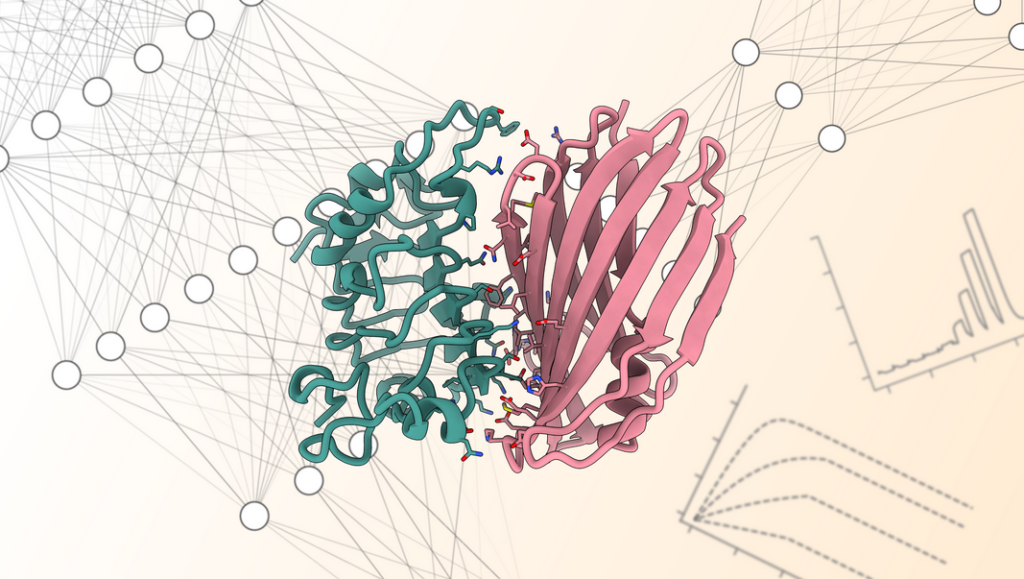![BindCraft Deep learning structure networks can hallucinate accurate protein binders with high experimental success rates [Martin Pacesa]](https://www.genengnews.com/wp-content/uploads/2025/08/BindCraft-696x393.png)
For the field of drug development, hitting the right target with atomic precision to achieve therapeutic effect remains the core challenge. While traditional R&D pipelines are dependent on resource-intensive experimental screens with measly hit rates, many biotechs are arguing that AI-guided discovery, which can identify top candidates in silico, is the key to cutting timelines and saving costs.
Martin Pacesa, PhD, a postdoctoral researcher at École Polytechnique Fédérale de Lausanne (EPFL), focuses on developing such computational pipelines to design proteins from scratch for new functional applications, where traditional success rates have landed at less than 1%. His vision is to build a “one-click” tool for researchers in traditional biochemistry labs who do not have a computational background.
In a preprint on bioRxiv posted in October 2024, Pacesa and colleagues from EPFL released BindCraft, an automated pipeline for de novo protein binder design that achieved significantly improved 10–100% success rates with strong affinity without the need for high-throughput screening or experimental optimization. Concurrently, the model was made widely available under the highly permissive Massachusetts Institute of Technology (MIT) license, which allows commercial use.
The work is now published in a new Nature study titled “One-shot design of functional protein binders with BindCraft,” with Pacesa as first author, and co-corresponding authors Sergey Ovchinnikov, PhD, assistant professor at MIT, and Bruno Correia, PhD, associate professor at EPFL.
One-shot design
BindCraft successfully designed binders against a range of structurally diverse targets, including therapeutically relevant cell-surface receptors, common allergens, and complex multi-domain nucleases, such as CRISPR-Cas9. Designs showed functional and therapeutic potential in reducing antibody binding to birch allergen in patient-derived samples, modulating Cas9 gene editing activity, and lowering the cytotoxicity of a foodborne bacterial enterotoxin.
The model demonstrates a “one-shot” design, in which multiple high-affinity binders are produced from a single small library. Results showed that generating no more than 10 designs was needed to achieve hits in the nanomolar range.
To assess the generalizability of the pipeline beyond known proteins, BindCraft also designed binders against a de novo beta-barrel fold 14 (BBF-14), a protein with no natural sequence homologues. Beta-barrels are challenging targets because they lack binding sites that support protein-protein interactions. Six out of eleven BindCraft designs were experimentally validated to hit BBF-14.
Pranam Chatterjee, PhD, assistant professor of bioengineering at the University of Pennsylvania, affirms that BindCraft is positioned as a very promising method for the field.
“The data shown on the diverse targets were very convincing. BindCraft is simplistic and seems to work out of the box with a great hit rate,” Chatterjee told GEN.
Chatterjee is known for his sequence-only approach to protein design and recently published PepMLM, a protein language model that demonstrated the design of peptides, up to 50 amino acids in length and optimally small for drug development, to bind targets relevant to Huntington’s, viral infections, leukemia, and more without structural input.
Since BindCraft’s release, Pacesa told GEN that the community response has been “overwhelming” with wide adoption across notable industry players, including Merck, Roche, Novo Nordisk, Novartis, AstraZeneca, and more medium-sized and small companies. Research groups have also adapted BindCraft to broader territories, including the design of high-affinity peptides.
Open science for the win
Much of the field points to RFdiffusion as the current state-of-the-art model for de novo protein design. The diffusion-based model was developed by the lab of Nobel Laureate David Baker, PhD, Howard Hughes Medical Institute (HHMI) investigator and the director of the Institute for Protein Design at the University of Washington (UW).
RFdiffusion generates protein backbones and uses ProteinMPNN to design sequences that fold onto the new structure. Designs are then computationally filtered using AlphaFold confidence metrics to identify top candidates that are most likely to be experimentally validated.
BindCraft takes an alternative “hallucination” approach, in which a sequence is iteratively adjusted and evaluated by AlphaFold confidence to reach an optimal new design not found in nature, in this case, a predicted interaction with a target. In contrast to RFdiffusion’s fixed backbone method, BindCraft co-folds the target and binder to improve designs by allowing levels of induced fit.
The seeds for BindCraft were planted after Ovchinnikov shared early AlphaFold hallucination work among his open-source notebook for protein structure prediction and design protocols, termed ColabFold and ColabDesign. “I didn’t think anyone would use it, but then I started getting emails,” Ovchinnikov told GEN as he described the “open science for the win” moment.
Ovchinnikov first received a note from Manu Ben-Johny, PhD, assistant professor of physiology & cellular biophysics at Columbia University, who wrote that protocols from Ovchinnikov’s notebook were able to generate a peptide that reversed defects in sodium channels. Pacesa and Correia eventually followed suit, adapting the work to generalizable one-shot designs via BindCraft.
In terms of constraints, Ovchinnikov noted that BindCraft’s computational efficiency is slower than diffusion-based approaches, given the need to run AlphaFold at every iteration step, which limits the model’s ability to adapt to larger proteins. However, when comparing models over the same period of time, BindCraft success rates are shown to achieve more hits.
When reflecting on deciding which model to use, Chatterjee encourages researchers to reflect on their research context.
“For people who want one good tool that is generally applicable, a sequence model makes the most sense,” Chatterjee told GEN. “If you want to focus on a particular target, then look at whether your target fits a BindCraft modality. Do you want a mini binder protein? Is your target very stable? We’re moving toward a world where one model could work in all cases, but may not be the best in all cases.”
Among a commercial landscape shielded under proprietary lock and key, BindCraft’s release illustrates the power of open science in pushing forward the next wave of therapeutic impact. As model downloads continue to rise, so does the collaborative spirit.



